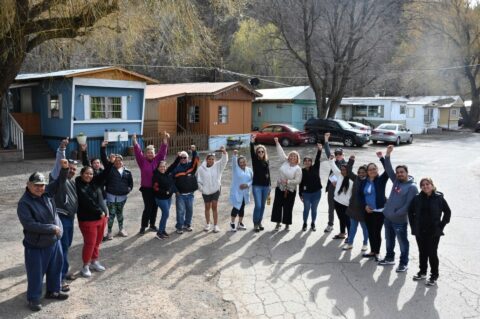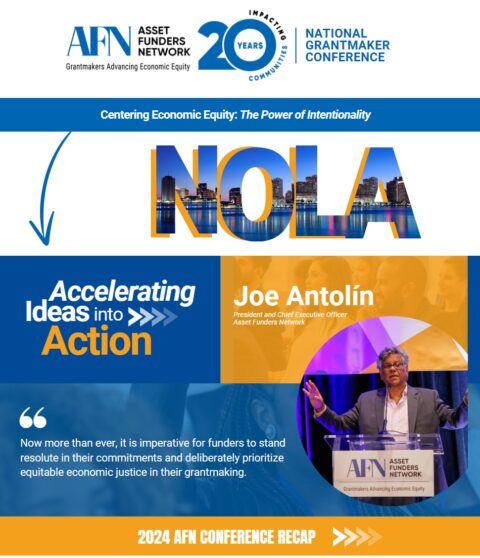Guaranteed Income (“GI”) is a compelling strategy that will support a household to address basic needs repairing the gaps in public safety nets, as well as, be a source of income stabilization or provide an income resource to create or protect assets. From AFN’s perspective, GI should be designed at scale for all three. But that can only happen if intentionally designed to address all three.
Intentionality means that funders, public officials, and designers of GI pilots resist the pressure to limit the potential of the tool and only address the highest poverty related need. We also need GI funders, public and private, to resist imposing a scarcity frame that restricts the total expenditure to a small cumulative amount ignoring the overall economic gains and social impact. Thankfully, an increasing number of funders and governments are exploring program design — including how to ensure a community informed design, who should receive the income, funding levels, and evaluating guaranteed income impacts from pilots of different designs and goals.
GI for Basic Needs
GI provides a regular payment to the qualifying households for a defined period of time. The concept can be used to ensure households have enough money to meet their basic needs from food or ability to pay the rent to getting care for their child or any other need they identify. GI can help a household avert a crisis related to basic necessities or can be an effective foundation for youth transitioning from foster care to ensure they can meet their housing and food and other needs as a bridge to independence with self-sufficiency. Those basic needs designs have been the focus of most current GI initiatives and are important uses for GI, but that is not the full exploration and use of the potential of GI.
GI to help Build Assets
Providing individuals and households with dignity and agency is key for asset building. As opposed to most basic needs safety net assistance programs, GI funds provide a person with the freedom and dignity to exercise their agency to spend their income on the needs they identify. The recent Federal experiment with the Child Care Tax Credit of 2021 (a refundable credit of $3600 for each child under age 6 and $3000 for children age 6 to 17 to the parent whose income was less than $75,000 (or $150,000 for married parents) gave us clear evidence of the full range of how GI could be a key tool as households used the funds to avert crisis, create stability, reduce high-cost debt, and provide for asset building steps. GI supplements income, it increases stability and creates disposable income.
Another fundamental prerequisite for asset building is stable income. Households build assets using disposable income after basic needs of food, housing, clothing, medicines, and transportation are met. Of course, for homeowners the payment of mortgages also provides a path towards building equity in the home. Otherwise, disposable income is a vehicle for asset building whether it is in the form of a payroll deduction to build an asset, the deposit to savings, payments to reduce debt, or making any of a range of investments.
Agency and stable income provided by GI allows individuals and those otherwise living paycheck to paycheck or with unstable income, to identify disposable income and to realize opportunity to build assets. This different level of reliable economic stability allows them to choose from the options to reduce debt, start or increase emergency savings, contribute to a child’s college or CSA account, start or add to a retirement account, repair their home, invest in a small business, or make other investments.
The policy acceptance and funding to expand and continue GI represents a valuable potential sea change in household income, financial stability, and asset building potential in the United States. While we continue to develop pilots and build our knowledge base, AFN will continue to advocate with our partners to ensure GI program designs include both those in extreme poverty as well as workers in low and moderate income households — all of whom will use these funds in ways essential to their households, strengthening the community and increasing their stability and assets.


